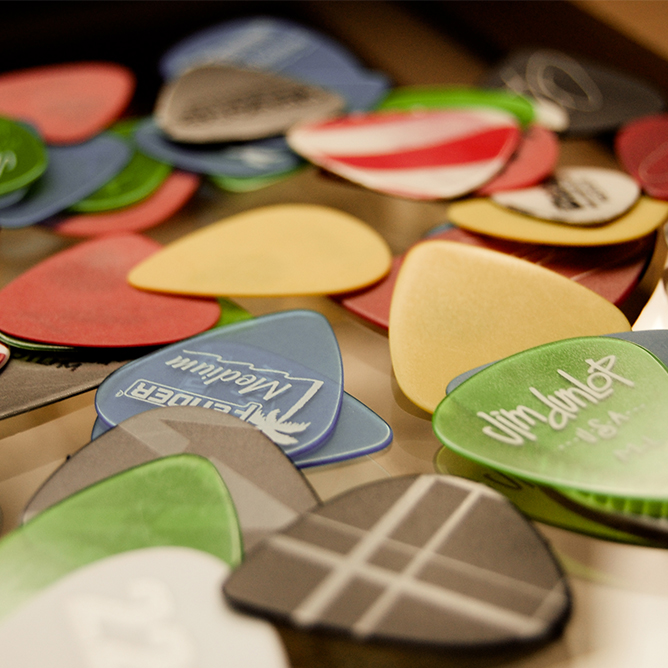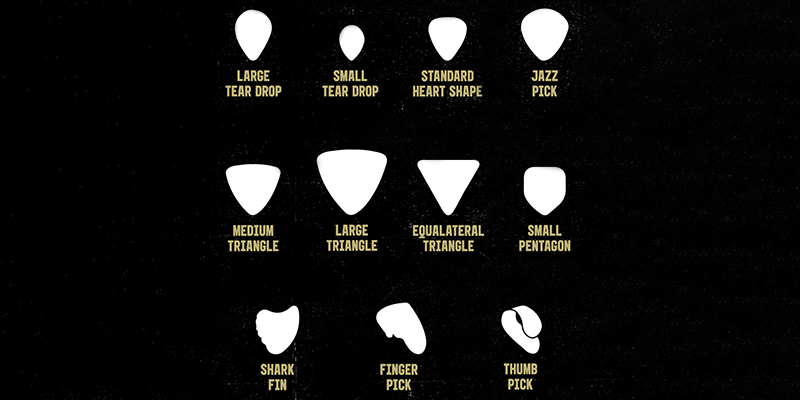Material
If you’re not sure that material is important when it comes to using a guitar pick, try playing with a coin. You’ll quickly realise just how important the material is! A whole host of materials could be used for picks, all of which have different properties. Most picks available are made with plastics such as Celluloid, Delrin and Nylon. However custom acrylic, wood, metal and even stone picks are available. Celluloid originally was an alternative to tortoiseshell (which is now banned) and offers a similar feel. Nylon is strong, durable and usually features a texture for added grip, but these can fray over extended use. Delrin has a powdery feel to it, almost like the pick has been dropped in chalk.


